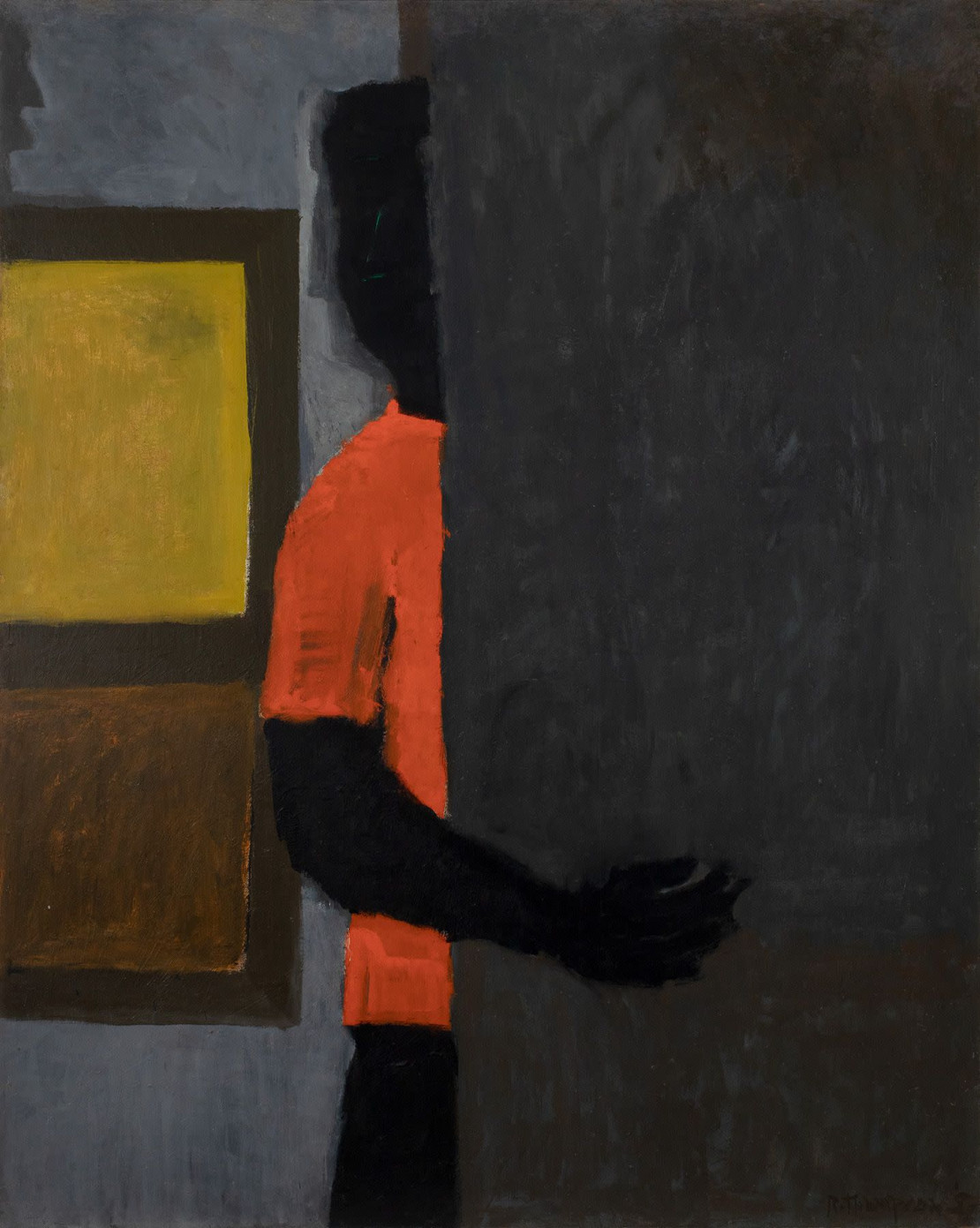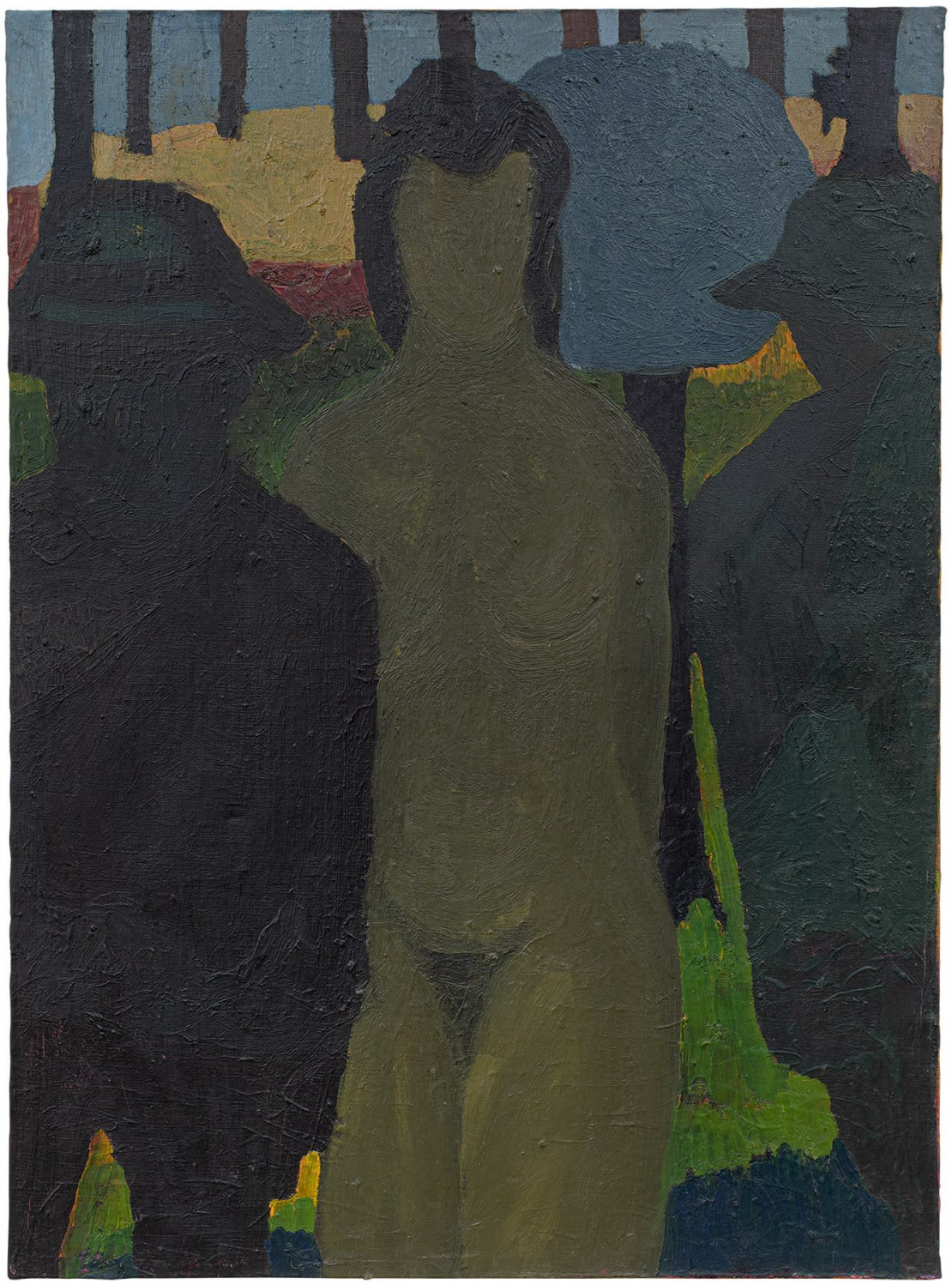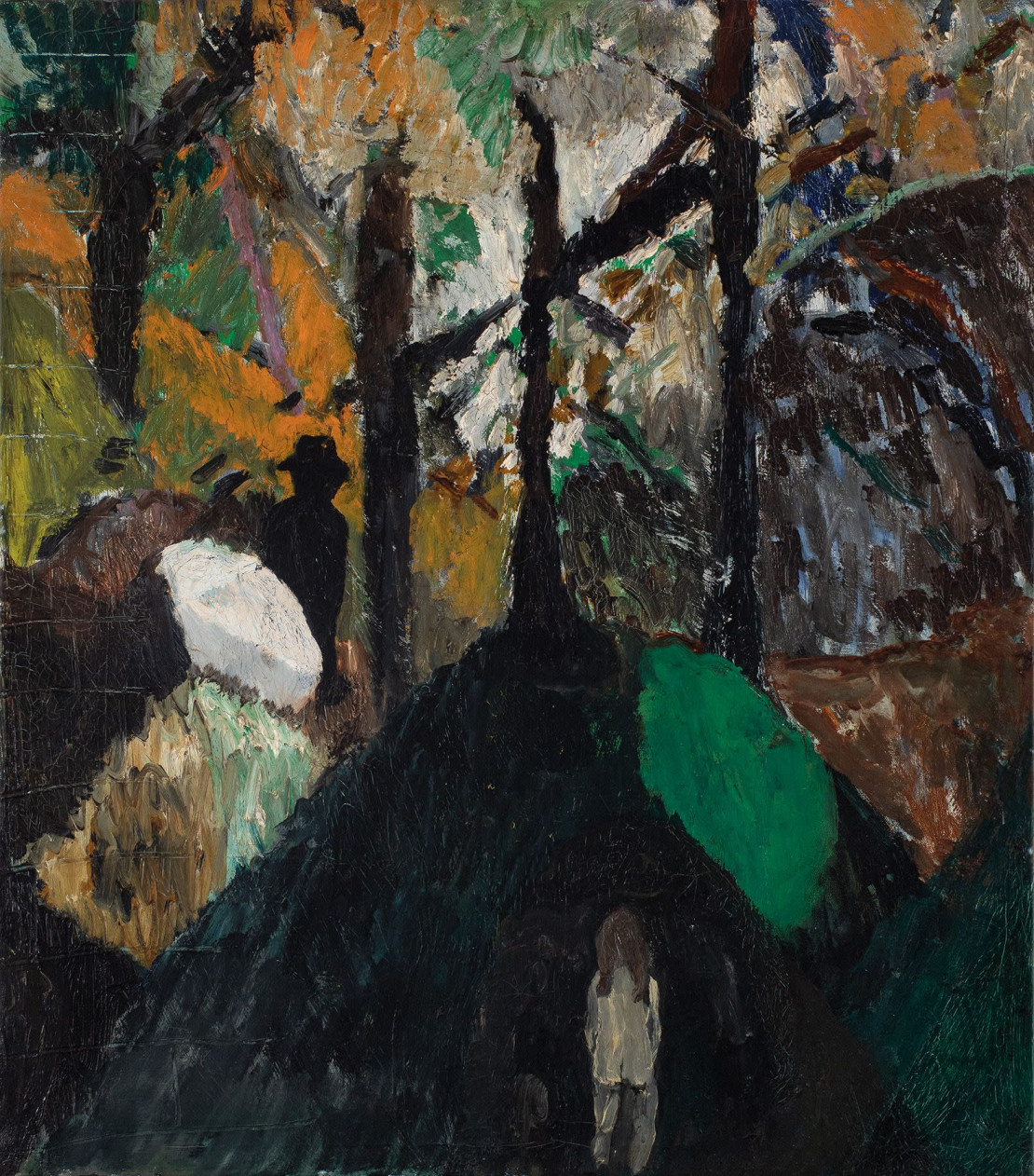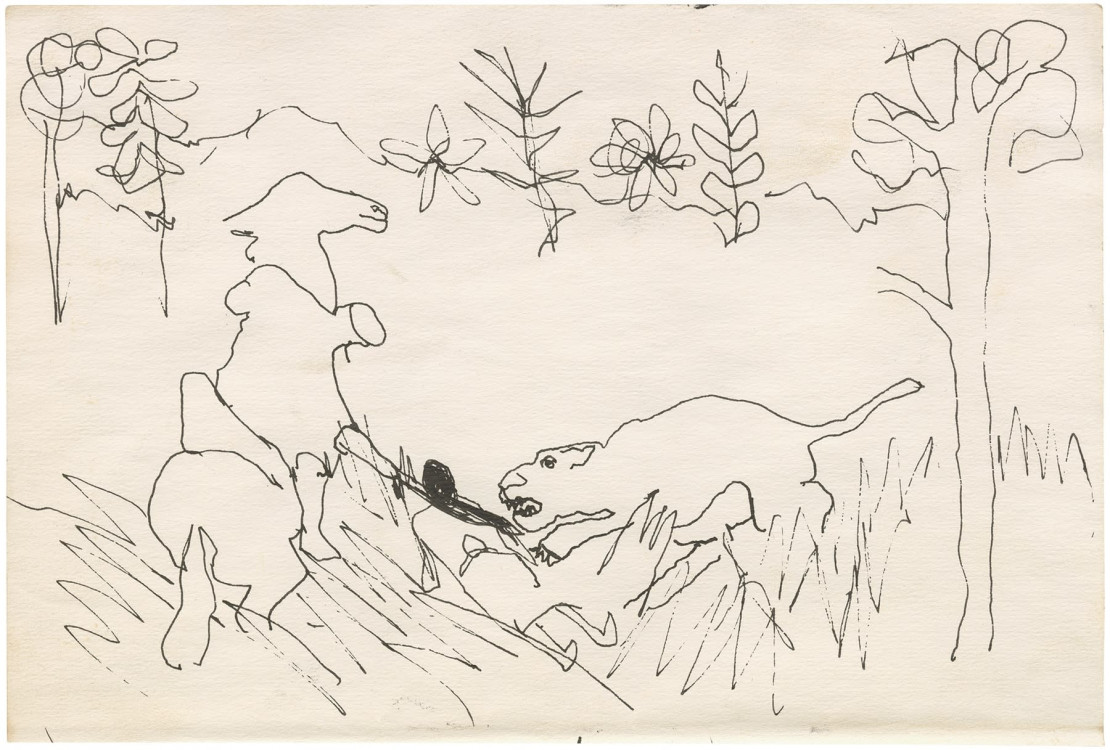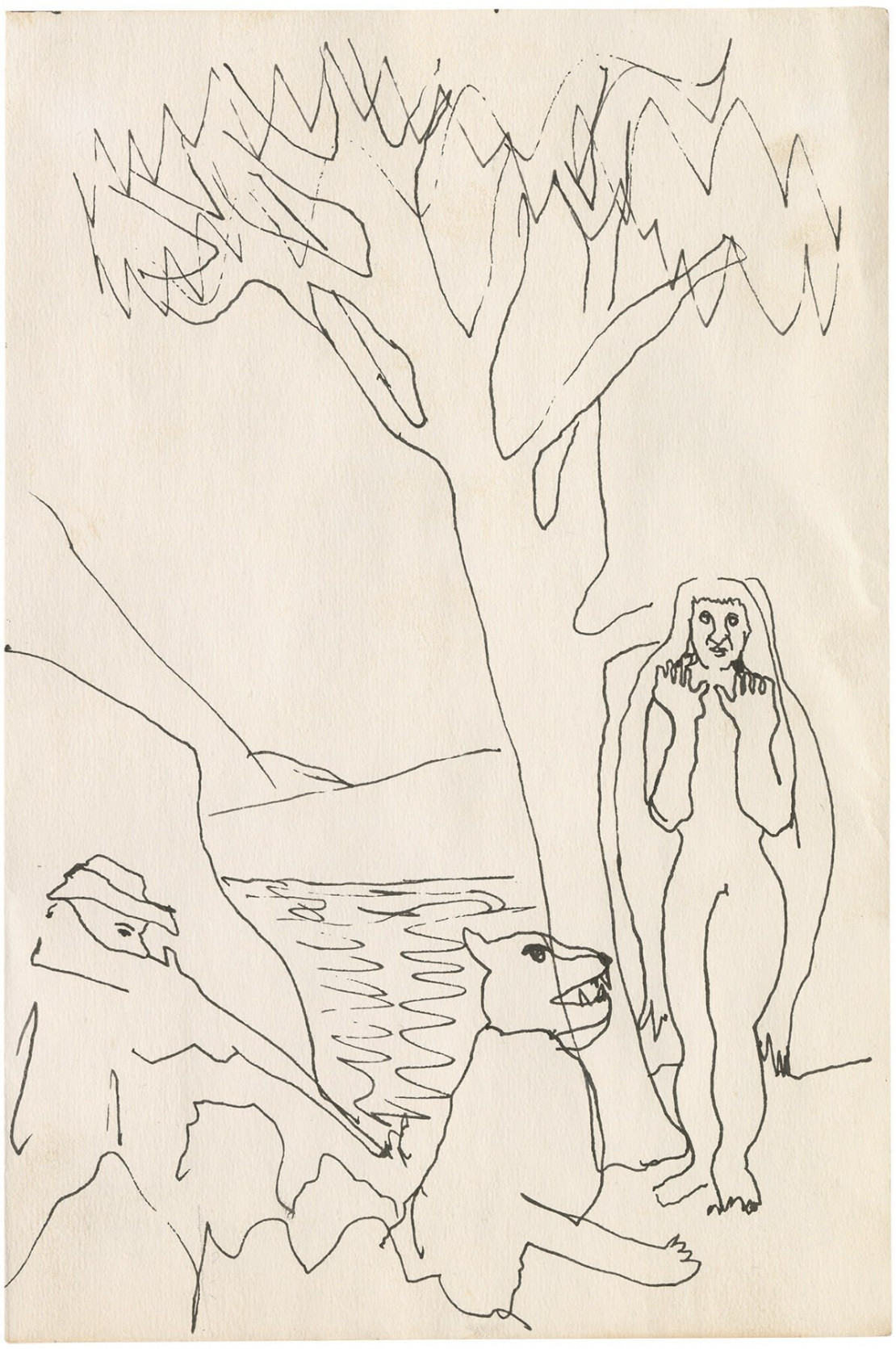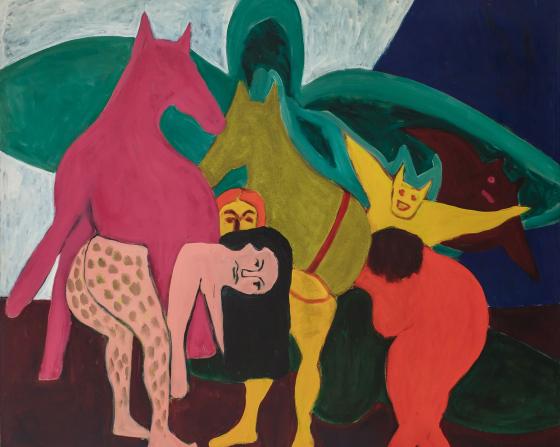Bob Thompson
1937–1966
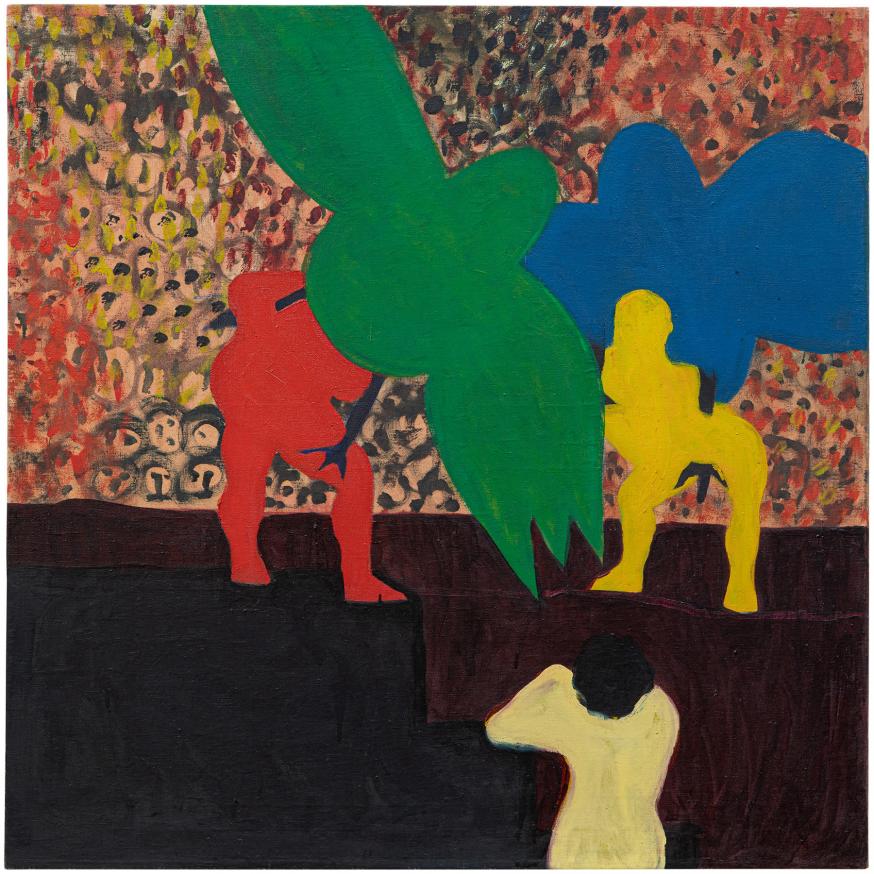
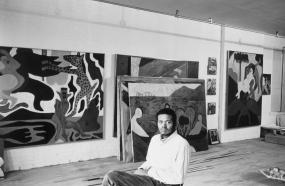
Bob Thompson in his 6 Rivington Street studio, New York, NY, November 30, 1963; Photographer Fred W. McDarrah
All artworks displayed above are currently available. To inquire about additional works available by this artist, please contact the gallery.
Biography
I paint many paintings that tell me slowly that I have something inside of me that is just bursting, twisting, sticking, spilling over to get out. Out into souls & mouths & eyes that have never seen before. The Monsters are present now on my canvas as in my dreams.
Bob Thompson (1937–1966) was one of the most significant painters of his generation who, despite his short career, was tremendously respected and successful. Drawing inspiration from jazz music and the Old Masters of art history, Thompson’s art of the late-1950s and 1960s imbued figure painting with a new vitality at a time when abstract expressionism was at its apogee. Bob Thompson was born in Louisville, KY, but his family soon relocated to Elizabethtown, KY, where his father opened a dry-cleaning business. The move took the family away from the urban bourgeois social network to which the family had belonged in Louisville, and since his father discouraged his children from associating with the lower-income black children in their new community, Thompson and his sisters spent much of their childhood without close friends. Thompson was very close to his father, so his sudden death in a car accident when Thompson was thirteen left an indelible mark on the artist’s psyche and physical health. Not long after his passing, Thompson contracted mumps, which then developed into encephalitis, causing him to slip into a coma for three days. Although he recovered, Thompson was left with chronic, severe headaches for several years afterward. In 1950, Thompson moved back to Louisville to live with his sister Cecile and her husband, Robert Holmes, a cartographer who also cultivated an art practice, and had encouraged Thompson’s interest in drawing since an early age. Thompson’s parents strongly believed in the value of education and expected all of their children to attend college, so while living in Louisville Thompson attended an academically rigorous, all-black high school that included African American history in its curriculum. He graduated in 1955 and enrolled in Boston University, living in Cambridge with his sister Phyllis and her family. Thompson initially intended to study medicine but, in 1956, with low grades and attenuating interest, he left Boston and transferred into the art program at the University of Louisville.
The faculty at Louisville included several German refugees, and their interest in Expressionism had a formative impact on Thompson. In 1958, he spent the summer in Provincetown, Massachusetts, where he encountered the work of another German refugee, the Expressionist painter Jan Müller, which had a pronounced influence on Thompson. Although Müller had died months before Thompson got to the Cape, he met the artist’s widow, Dody Müller, who advised Thompson, “Don't ever look for your solutions from contemporaries—look at Old Masters.” [1] That same summer, Thompson also met and befriended a group of artists who were taking a divergent path from that of the New York School painters, including Emilio Cruz and Gandy Brodie. These artists, as Peter Schjeldahl writes, “embraced a peculiar vision of art history… Its matter and manner announced the artists as a community of untrammeled, funky seers who all but breathed paint.”[2] After a brief stopover in Louisville at the end of the summer, Thomas relocated to New York, eventually settling into a cold-water flat in a decaying tenement on the Lower East Side.
Quickly embracing the vibrant bohemian culture of the downtown avant-garde scene, Thompson met and befriended Amiri Baraka (then LeRoi Jones) as well as other leading artists and writers of the Beat generation. An inveterate jazz lover, Thompson was a regular at the Five Spot Café, where legendary talents like Ornette Coleman, Thelonious Monk, John Coltrane, and Charlie Haden often played. He also participated in a few early Fluxus Happenings organized by Allan Kaprow and Red Grooms, filling out their roster of painter-performers, which also included Jasper Johns, Robert Rauschenberg and Jim Dine. Inspired by the city’s energy and culture, Thompson quickly arrived at his mature style, taking Dody Müller’s advice to heart by reworking the compositions of European Masters such as Piero della Francesca, Nicolas Poussin, Francisco de Goya and Jacopo Tintoretto into simplified, abstracted forms rendered in palettes alternately hot and violent or cool and dark. By appropriating Old Masters’ compositional structures contemporary and transforming them into contemporary allegorical nightmares, Thompson developed his own symbolic lexicon to express themes and concepts reflective of his own experience. The pantheon of figures that populated his landscapes often featured specific people, monstrous creatures, mythically oversized animals, and silhouetted men in hats—the latter of which are often a symbol of the artist’s own spiritual and physical existence.
Visceral in style yet structurally disciplined, Thompson’s paintings soon impressed critics and collectors, and less than a year after his arrival to the city, the audacious young painter had his first solo exhibition at the Delancey Street Museum, which was followed by a two-person show at the prestigious Zabriskie Gallery. In late 1960 Thompson married Carol Plenda and that winter the couple traveled to Europe on a travel grant from the Walter Gutman Foundation. There Thompson was able to study the masterworks with which his practice was in conversation first-hand, visiting the Louvre almost daily to sketch during their stay in Paris. In 1962, a grant from the Whitney Opportunity Fellowship allowed the couple to relocated to the Spanish island of Ibiza, where the cost of living was exceptionally low and there was a large international community. The Thompsons soon became known for their hospitality, welcoming friends and strangers into their home, feeding them, and hosting all manner of parties and happenings.
Bob and Carol Thompson returned to New York in 1963, renting an apartment on the Lower East Side, not far from the studio of friend and fellow artist Lester Johnson, who helped Thompson get a one-man show at Martha Jackson’s gallery that same year. The show received favorable reviews and propelled the artist’s career to a new level of success. In 1964, he had solo exhibitions at the Richard Gray Gallery in Chicago and at Paula Cooper’s gallery in New York, after which collector Joseph Hirshhorn purchased a number of his paintings. On the recommendation of Lester Johnson, Thompson was included in Yale University’s influential Seven Young Painters exhibition that same year. He had a second solo exhibition with Martha Jackson in 1965, which brought an unprecedented number of viewers to the gallery. The following year, Thompson used the money from the Martha Jackson exhibitions to travel to Rome with the intent to further his study of the Renaissance. Early in 1966, he required emergency gall bladder surgery, after which he was advised to take a long recuperation period. However, Thompson soon returned to his characteristically frenzied pace of work and continued to use alcohol and recreational drugs, dying of respiratory complications a few months later. In 1967, St. Mark’s Gallery in New York held a memorial exhibition of his work. In a brief life that included only eight years of full-time painting, Thompson created a complex body of work that has proven to be of great significance to successive generations of artists and art historians.
Since his death, Thompson has been the subject of numerous solo exhibitions. In 1969, a retrospective was held at the New School Art Center in New York, followed by a memorial exhibition at the Speed Art Museum, Louisville in 1971. Subsequent solo exhibitions were held at the University Art Gallery of the University of Massachusetts at Amherst (1974); the National Collection of Fine Arts, Smithsonian Institution in Washington, DC (1975) and The Studio Museum in Harlem in New York (1978). In 1998, the Whitney Museum of American Art organized a major traveling retrospective exhibition, featuring over one hundred of Thompson’s paintings with an accompanying catalogue by Thelma Golden. In 2012, the Hite Art Institute of the University of Louisville mounted Seeking Bob Thompson: Dialogue/Object.
In July 2021, the Colby College Museum of Art in Waterville, ME opened the comprehensive career retrospective Bob Thompson: This House Is Mine, organized by Katz Curator of Modern and Contemporary Art Diana Tuite. A fully illustrated accompanying catalogue published in association with Yale University Press features an expansive group of contributors including Adrienne L. Childs, Bridget R. Cooks, Lowery Stokes Sims, Rashid Johnson, and Alex Katz. The exhibition garnered widespread critical acclaim as it toured nationally, visiting the Smart Museum of Art at The University of Chicago (February 10–May 15, 2022); the High Museum of Art in Atlanta, GA (June 17–September 11, 2022); and the Hammer Museum at the University of California, Los Angeles (October 9, 2022–January 8, 2023). In addition to museum retrospectives, Thompson has been celebrated in multidisciplinary capacities, such as in February 2024, when the acclaimed chamber music group Black Moon Trio performed the special concert “Spilling Over: Music Inspired by the Art of Bob Thompson” at the Logan Center for the Arts at the University of Chicago in Chicago, IL.
Thompson’s work has also been regularly exhibited in important group exhibitions worldwide, including the major traveling exhibition Soul of a Nation: Art in the Age of Black Power, organized by the Tate Modern, London, England (2017–2020); Riffs and Relations: African American Artists and the European Modernist Tradition, curated by Adrienne L. Childs at The Phillips Collection, Washington, DC (2020); Black Refractions: Highlights from The Studio Museum in Harlem organized by The Studio Museum, New York, NY (2019–2021); and The Dirty South: Contemporary Art, Material Culture, and the Sonic Impulse, organized by Virginia Museum of Fine Arts, Richmond, VA (2021–22). In 2022, Thompson’s work was included in the exhibitions Elegy: Lament in the 20th Century at the Philadelphia Museum of Art, Philadelphia, PA; New York: 1962-1964 at The Jewish Museum, New York, NY; America: Between Dreams and Realities, Selections from the Hirshhorn Museum and Sculpture Garden at the Musée National des Beaux-Arts du Québec, Quebec City, Quebec, Canada; and When We See Us: A Century of Black Figuration in Painting organized by The Zeitz Museum of Contemporary Art Africa in Cape Town, South Africa, which traveled to the Kunstmuseum Basel in Basel, Switzerland. Thompson’s work continues to be included in museum exhibitions, including Black Artists in America: From Civil Rights to the Bicentennial at the Dixon Gallery and Gardens in Memphis, TN (2023); Americans in Paris: Artists Working in Postwar France, 1946–1962 organized by Grey Art Gallery, New York University, New York, NY (2024); and Surrealism and Us: Caribbean and African Diasporic Artists since 1940 at the Modern Art Museum of Fort Worth, TX (2024).
Michael Rosenfeld Gallery’s relationship with the work of Bob Thompson dates to 1996, when the gallery took on representation of the estate and mounted Bob Thompson: Heroes, Martyrs & Spectres. Three more solo exhibitions followed: Fantastic Visions (1999), Meteor in a Black Hat (2005)—which traveled to the Haggerty Museum of Art at Marquette University in Milwaukee—and Naked at the Edge. Following twenty-three years of representation, Michael Rosenfeld Gallery acquired the Estate of Bob Thompson in 2019, a tremendous procurement that included all remaining works in the family’s possession, numerous artist sketchbooks and the artworks’ intellectual property rights. In 2023, the gallery opened Bob Thompson: Agony & Ecstasy, which received widespread acclaim from critics and audiences.
Bob Thompson’s work is in museum collections worldwide including Arkansas Museum of Fine Arts, Little Rock, AR; Art Institute of Chicago, Chicago, IL; Birmingham Museum of Art, Birmingham, AL; Brooklyn Museum, Brooklyn, NY; California African American Museum, Los Angeles, CA; Chrysler Museum of Art, Norfolk, VA; Crystal Bridges Museum of American Art, Bentonville, AR; Colby College Museum of Art, Colby College, Waterville, ME; Columbus Museum of Art, Columbus, OH; Cummer Museum of Art & Gardens, Jacksonville, FL; Denver Art Museum, Denver, CO; Detroit Institute of Arts, Detroit, MI; Flint Institute of Arts, Flint, MI; Greenville County Museum of Art, Greenville, SC; He Art Museum (HEM), Beijiao, Shunde, Guangdong, China; Herbert F. Johnson Museum of Art, Cornell University, Ithaca, NY; Hirshhorn Museum and Sculpture Garden, Washington, DC; The Metropolitan Museum of Art, New York, NY; Minneapolis Institute of Art, Minneapolis, MN; The Mint Museum, Charlotte, NC; Museum of Art, Munson-Williams-Proctor Arts Institute, Utica, NY; The Museum of Contemporary Art Chicago, Chicago, IL; Museum of Contemporary Art, Los Angeles, CA; Museum of Fine Arts, Boston, MA; Museum of Fine Arts, St. Petersburg, FL; The Museum of Modern Art, New York, NY; Nasher Museum of Art, Duke University, Durham, NC; National Gallery of Art, Washington, DC; New Jersey State Museum, Trenton, NJ; New Orleans Museum of Art, New Orleans, LA; The Newark Museum of Art, Newark, NJ; Norton Museum of Art, West Palm Beach, FL; Pennsylvania Academy of the Fine Arts, Philadelphia, PA; Philadelphia Museum of Art, Philadelphia, PA; SCAD Museum of Art, Savannah College of Art and Design, Savannah, GA; The Smart Museum of Art, The University of Chicago, Chicago, IL; Smithsonian American Art Museum, Washington, DC; Solomon R. Guggenheim Museum, New York, NY; The Speed Art Museum, Louisville, KY;
The Studio Museum in Harlem, New York, NY; Tougaloo College Art Collections, Tougaloo, MS; University Art Museum, University of California, Santa Barbara, CA; University of Louisville Art Collection, Louisville, KY; Wadsworth Atheneum Museum of Art, Hartford, CT; and the Whitney Museum of American Art, New York, NY.
Michael Rosenfeld Gallery LLC is the exclusive representative of the Estate of Bob Thompson.
[1] Bob Thompson quoted in “Academic Strait Jacket: Disdainful Thompson,” Gazette of the Arts in Louisville, February 9, 1959, Box 1, Folder 55, News Clippings, 1959–1969, Series 6: Printed Material, 1960 – 2005, Bob Thompson Papers.
[2] Peter Schjeldahl, “Touching Thompson,” Village Voice, October 19, 1998.
Press
Mediapart | June 8, 2025
Centre Pompidou | May 20, 2025
Radio France Internationale (RFI) | May 15, 2025
The Art Newspaper | April 2025
The Provincetown Independent | January 1, 2025
Publications

- [1]Bob Thompson, undated letter to his family, as quoted in Gylbert Coker, The World of Bob Thompson, exhibition catalogue (New York: The Studio Museum in Harlem, 1978), pp. 22.

